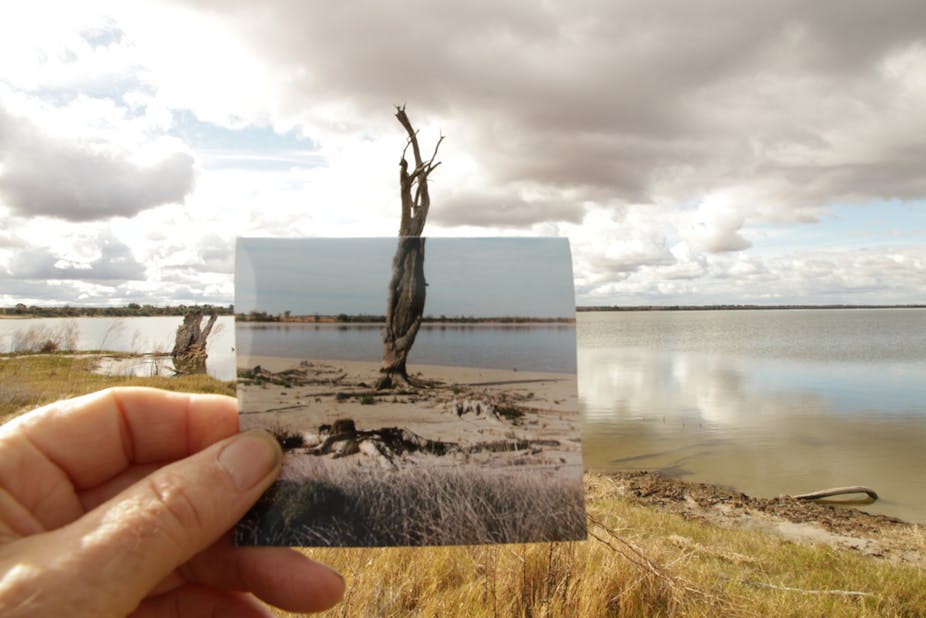Will the Murray-Darling Basin Plan put an end to a century of squabbling? It’s unlikely. There are already those who suggest the water going back to the river isn’t enough, the rivers need more. And of course there are those who say it is too much, the economy and Basin communities can’t afford it. But now we have an agreed volume of water, the task is to monitor whether it’s doing the things it’s supposed to do.
The logic behind the Murray-Darling Basin Plan, released last week by Minister Tony Burke – is that the river ecosystem sustaining the food-bowl of Australia, the Murray-Darling Basin, is running out of oomph. The Millennium drought exposed cracks in its resilience. While it has arguably bounced back to some degree, with the wet conditions of the last two years, does it have the capacity to withstand another inevitable drought phase?
The decline in river and wetland health in the Murray-Darling Basin is essentially a story about a shift in productivity. Water resource development, flow regulation and the development of a large irrigation industry have shifted production from the river-floodplain-wetland complexes we associate with the rivers of the Murray-Darling system to the floodplain-terrestrial environment of irrigated agriculture.
Water is still the key ingredient - it is just that the “product” has changed: from freshwater mussels, fish, waterbirds and other native wildlife to rice, cotton, fruit and vegetables. To fuel the latter ($15 billion in production annually) we have sacrificed the former.
Native fish population estimates today suggest only a fraction of former abundance – with estimates ranging between 1 and 10% of the biomass compared with pre-European estimates. Freshwater mussels and large invertebrates such as the iconic Murray crayfish were once common and sustained many indigenous Australians. Freshwater mussel shells, left-overs from thousands of years of pre-European feasting, lie as middens along the banks of all the major rivers of the Murray-Darling. The Murray crayfish - once relied on by many as a food source - is now seriously threatened.
The quarrels and negotiations over water in the Murray-Darling Basin now span more than a century. There have been quarrels between states over water access and water rights, more recently between upstream and downstream water users, between agricultural and environmental groups.
The challenge is, can we have both – a vibrant agricultural industry, but also a productive and healthy river system? This is essentially what the Basin Plan is aiming to do.
We now have a volume of water to work with. But how will we know if this water is having the desired positive environmental benefits we need for the rivers, wetlands and floodplains? How will we know if the Basin Plan is working?
The one thing we do know is that water is key to the functioning of healthy aquatic ecosystems, and we need our rivers to be healthy so they can provide critical goods and services for people as well. The presence of water at some time and place is what makes a river a river, a wetland a wetland, a floodplain a floodplain. Without water, the terrestrial takes hold.
Flow, however, is not constant; it pulses down river networks and into wetlands sometimes with seasonal frequency or. More often than not for much of the Murray-Darling, the pattern that can seem erratic.
In Australia our variable climate and consequently variable river flow have shaped and sustained a suite of species (fish, invertebrates, waterbirds, plants) well adapted to this seemingly chaotic variability in the presence and volume of water. So, one challenge we face will be to ensure that the water “returned” to the river under the Basin Plan is allowed, as best as possible, to mimic patterns of flooding and drying.
As we move into this new phase of water management in the Murray-Darling Basin we need a strong set of indicators, hydrological, physical, ecological, social and economic. These will allow us to report on the success, or otherwise, of this large basin-scale re-watering experiment. The current Sustainable Rivers Audit provides information on background river condition, but to adequately assess the changes associated with flow we may need more specific indicators.
Our indicators need to be sensitive enough to document the impact of this increase in environmental watering at both short time-scales, the scales that can feed back into management responses, but also in the long-term. Given the erratic nature of flow in the Murray-Darling Basin it may take many years before we see sustained positive responses to increased water, so we need to be here for the long haul.
The Basin Plan is the first time in more than a century of taking from the river that we have a chance to put something back. There are sure to be questions of both scientists and managers as to the value of this investment. Therefore, we need to make sure that we are documenting the response of this re-watering so we can report to future generations the success, or otherwise, in restoring health to the rivers and wetlands of the Murray-Darling Basin.
To understand the hydrological changes and ecosystem responses associated with this re-watering, and to be ready for an operational Basin Plan in 2019, will require coordinated Basin-scale science. Once the Basin Plan is implemented, the science can continue to assess and inform the best use of our precious water resources.

